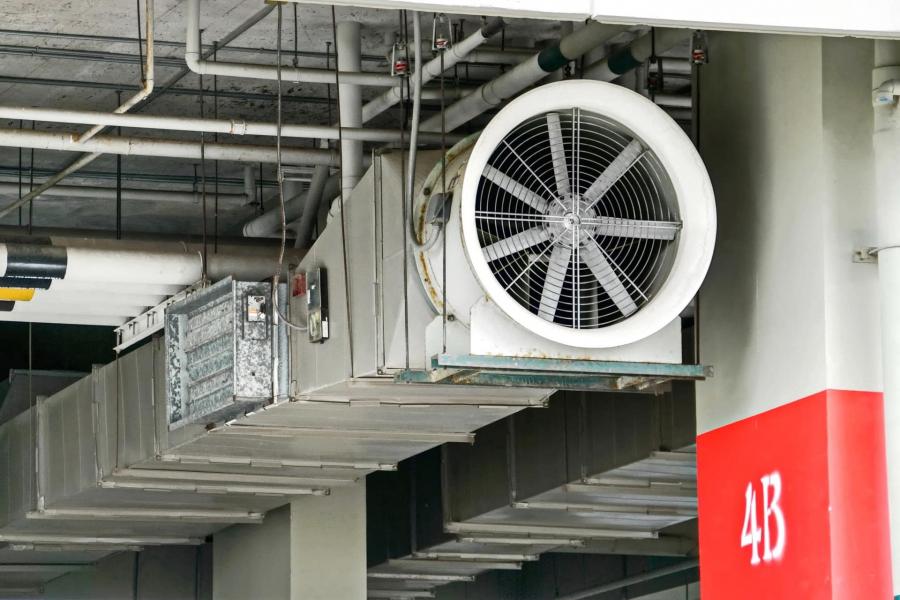
INSPECTION AND CERTIFICATION - SMOKE CONTROL SYSTEMS
INTRODUCTIE ROOKBEHEERSINGSSYSTEMEN
Rook zorgt bij een brand voor de meeste slachtoffers. Daarom worden rookbeheersingssystemen al vele decennia toegepast om mensen, gebouwen en goederen te beschermen tegen de gevolgen van brand. Er zijn veel verschillende redenen om tot de installatie van een rookbeheersingssysteem over te gaan. Soms geeft de gebruiker of eigenaar van een gebouw de opdracht om zijn brandrisico’s te beperken. Maar ook overheden kunnen een rookbeheersingssysteem voorschrijven als voorwaarde voor het verlenen van een bouw- of milieuvergunning. Wanneer om een of andere reden niet kan worden voldaan aan de brandveiligheidseisen uit het Besluit Bouwwerken leefomgeving (Bbl), kan installatie van het juiste type rookbeheersingssysteem een gelijkwaardige bescherming bieden.
Om ervan verzekerd te zijn dat het rookbeheersingssysteem voldoende bescherming biedt tegen het risico waartegen men zich wil indekken, eist men vaak een inspectiecertificaat van het systeem. Dat biedt de zekerheid dat het rookbeheersingssysteem niet alleen bij oplevering, maar gedurende de hele levensduur aan de eisen voldoet en dat het de bescherming biedt die men er redelijkerwijs van mag verwachten.
TOEPASSINGSGEBIED ROOKBEHEERSINGSSYSTEMEN
Er zijn ruwweg drie typen rookbeheersingssystemen.
- Een rook- en warmteafvoersysteem (RWA) maakt bij brand veilig vluchten mogelijk, zorgt dat de brandweer de brand van binnenuit kan bestrijden, voert voldoende rook en warmte af om na het blussen nazorg mogelijk te maken, en beperkt de brandschade aan een gebouw.
- Stuwkrachtventilatiesystemen, die meestal in ondergrondse parkeergarages worden gebruikt, zorgen normaal voor afvoer van uitlaatgassen, maar kunnen bij brand op vol vermogen worden gezet voor een snelle rookafvoer.
- Overdruksystemen zorgen bij brand voor een overdruk in bij voorbeeld een trappenhuis, zodat deze belangrijke vluchtwegen vrij van rook blijven.
NORMINHOUD
Voor de certificatie van een rookbeheersingssysteem is een groot aantal normen van toepassing:
BR 368; NEN1087; NPR 6095-1; NEN 6098; NFPA 92; NFPA 92A; NFPA 92B; NFPA 204; NPR-CEN/TR 12101-4; NPR-CEN/TR 12101-5; NEN-EN 12101-6; NPR 6095-2; SBR-publicatie 233; TNO rapport B-90-084; 96-CVB-T0330 (deel 1 t/m 4); VdS 2098; VdS 2221;VdS CEA 4020; Technical Paper 7; Technical paper 10.
Afhankelijk van de afgeleide doelstelling van het rookbeheersingssysteem dient in een uitgangspuntendocument te worden vastgelegd welke van bovengenoemde normen voor het betreffende systeem van kracht zijn.
CERTIFICATIE CCV INSPECIESCHEMA’S
Hoe ziet een certificatietraject eruit? Inspecties kunnen plaatsvinden op afgeleide doelstellingen conform het CCV-inspectieschema Brandbeveiliging, Hierbij worden de uitgangspunten, het detailontwerp en de uiteindelijke installatie beoordeeld, waarna bij goedkeuring een inspectiecertificaat kan worden verstrekt.
RvA ACCREDITATIE
Bureau Veritas is door de Raad van Accreditatie geaccrediteerd voor het uitvoeren van inspectiewerkzaamheden onder registratienummer I 002, Type A onafhankelijke inspectie-instelling (zie ook RVA.nl). Dit geldt voor inspecties op afgeleide doelstellingen en inspecties op normconformiteit.
INFORMATIE
Voor aanvullende informatie over dienstverlening en de toepassingsmogelijkheden kunt u rechtstreeks contact opnemen met de afdeling Brand op 088 4505670